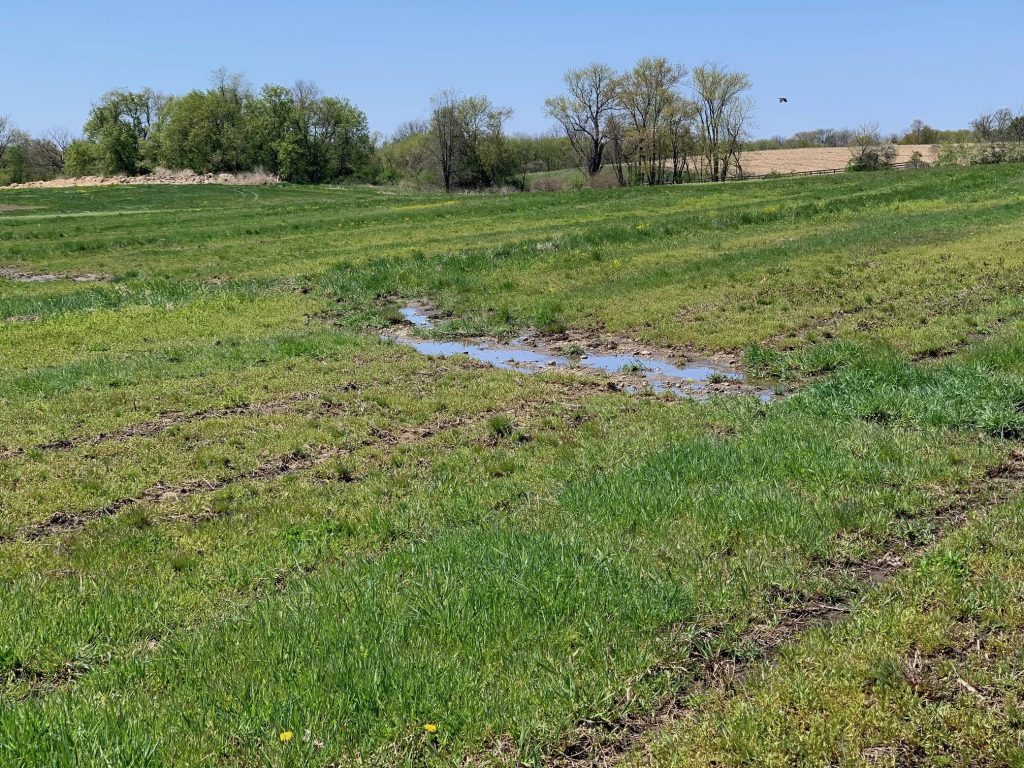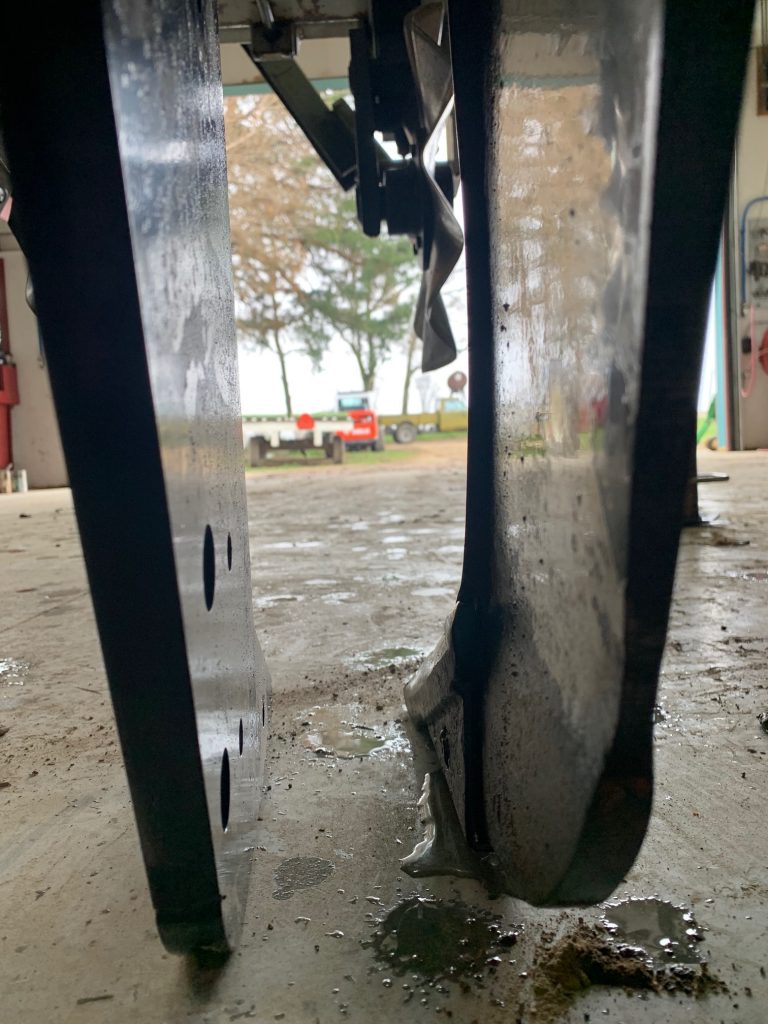Farmer John Writes: Giving the Soil Wings
Harvest Week 11, September 1st – 7th, 2020
We are now transitioning from our peak summer crops to our early fall crops. Sweet corn and melons are done as of last week. We still have some tomatoes, peppers and eggplant.
We have a plethora of baby greens coming on: mizuna, baby lettuce, Swiss chard, pea shoots, spinach, and more arugula. We will soon have cilantro and dill. These many crops succumbed over and over to weeds earlier this season, but finally, the weeds succumbed to us.
Also coming soon are broccoli, winter squash, beets, and head lettuce. Later, we’ll have potatoes, leeks, Chinese cabbage, kohlrabi, carrots, radishes, turnips, pac choi, cabbage, Brussels sprouts and popcorn.
Try Our Mizuna
This weeks’s mizuna is beautiful, and very abundant, probably the best yield we have ever had. I notice that our shareholders prefer it much less than arugula, but I suggest, if you are unfamiliar with it and especially if you like arugula, that you give it a try. From Serious Eats:”Mizuna’s taste is peppery like arugula and slightly bitter like frisee, yet it’s milder and sweeter than arugula or frisee. With its crisp stalks and beautiful frond-like leaves, mizuna is a wonderful addition to salads, especially where frisee is normally used.”
What Was Wrong?
The tomatoes, peppers and eggplant have not been stellar this summer. I thought that with the great weather and the well-prepared soil that we planted these crops into, they would yield well. The lower quarter of these fields drowned out, due somewhat to last spring’s rains but primarily the ground being simply saturated from the prior three seasons of extreme precipitation. The ground was waterlogged.
Nineteen fields north and west of the four fields I mention above, where the tomatoes, peppers and eggplant are, were too wet to work at all this season until about mid-July. Water was standing in many of those fields until then.
Finally the fields are dry enough to work deeply for next season. As I write this, we are completing the preparation of 34 fields for next season’s crops. In other words, we are getting our preparatory spring work done well in advance—in the summer prior to spring planting. We have been unable to achieve this in the past two years, due to flooding, but now we have a triumphant jump on next year’s work, with soil deeply tilled and seeded to fertility building cover crops.
Deep soil preparation is a vast topic. I will elaborate on it a bit for you, since you eat from our farm, and part of what you eat is due to the yield increases that result from proper soil preparation.
When You Take Off Your Mask
All of our growing beds are laid out on a grid according to GPS, and we adhere to this grid plus or minus one inch deviation. The grid is the same year after year, so the exact location of a bed and its respective field one year is the same as the location years into the future. Normally, we sub-soil each bed prior to planting in it, maybe just prior to planting it, or maybe the fall before. We make deep channels in our growing beds to enhance soil structure and soil fertility. Three shanks of our zone builder (sub-soiler) slice or knife through the soil, creating channels, for air to enter, which stimulates microbial life, and for moisture to exit. The moisture is often too prevalent for great soil health, due to our heavy clay soil.
Imagine that this tillage process might be a bit like taking off your Covid-deterring mask when you get home and noticing that you are now breathing better.
There are people who will object to this practice of deep tillage, feeling it is too violent towards the soil, an irreverent act (a bit anthropomorphic in my opinion.) However, I suspect that 10 to 15% of your vegetable volume is due to this practice. In other words, if we didn’t do it, you would receive fewer vegetables and herbs. Also, some fields that we farm used to yield horribly, maybe 10% of what they should have, due to a hardpan a few inches below the soil surface, which roots could not penetrate. Those fields are now productive.
Additionally, the channels we make with our zone builder provide for a softer, more penetrable space for our root crops such as carrots to penetrate into, providing longer carrots. If we did not sub-soil, your carrots would be mostly stubby.
Rip (not RIP)
There is a tool like the zone-builder called a ripper. A ripper also penetrates deeply into the soil, but the shanks and points on a ripper disturb the soil much more than our zone builder. A ripper will swirl and tumble the soil from down deep. Our zone builder does not typically disturb the soil profile; it simply slices through it, leaving the soil profile largely intact. I must add here, however, that with a lot of rain, the channels that the zone builder will make through our clay soil will lose their integrity, and to a large degree the soil will sort of melt or ooze back into the channels, eliminating much of the advantage of the channel, merging it back into an amorphous, undifferentiated bed of silty clay loam. However, generally speaking, the zone building method will create a sustained pattern in our soil that will enhance our crops.
Giving the Soil Wings (not a mixed metaphor)
This month, due to the persistent sogginess down deep in some of our fields, I added wings to the shanks of our zone builder, to lift, fluff and aerate a wide swath of soil about 16 inches deep with the intention of drying it out more thoroughly. I have used the zone builder for many years, and the wear on the original shanks was appreciable. This past spring, we noticed that the soil had worn the shanks down to where it seemed they were about to snap off.
I wrote about this phenomenon of soil vs steel in Farm News, Week 13, 2013, where I documented the soil’s wear on the coulters that slice through the crop residue ahead of the shanks, so the zone builder won’t plug up. In May this year, I spent a few thousand dollars replacing these worn shanks. It was only because I replaced them that they had the strength to accommodate the wings I recently bolted on to create more soil lift.
I am including some photos of the shanks we replaced and the wings we added.
I am also including a video that gives an impression of the lift that these wings provide, ideally aerating and drying a broad swath of soil across the bed.
Is There a Lesson for Life Here?
Ponder the power of our soil gliding by the shanks year after year, wearing that hard steel thinner and thinner. Compared to steel, the soil is very soft, yet this soft soil can wear steel down to a sliver. The steel’s hardness is no match for the power of soil over time.
The world today, with its rules and diseases and violence, seems like a daunting force of hardness, but over time, the more subtle forces of love, wisdom and virtue can greatly diminish the strength of this seemingly formidable hardness.
Warmly,
Farmer John









Hello John,
Today I found you on the internet. You touched my heart with this writing. “The world today, with its rules and diseases and violence, seems like a daunting force of hardness, but over time, the more subtle forces of love, wisdom, and virtue can greatly diminish the strength of this seemingly formidable hardness.”
God bless you and your loved ones.
Thank you for the lovely blessing, Lalit. Much appreciated.
Dear farmer John
Your message is very uplifting especially during this time in our country. LOVE is stronger than hate.
May God bless you.
Mary
Thank you for the blessing, Mary.
My wife has saved my life. I imagine many of us be believe our significant other has improved our lives…I hope so anyway. My wife and I celebrated 27 years of marriage this August. She has introduced me to the healthy eating of greens such as kale, collard, and swiss chard that I probably would not have eaten left to my own devices. We’ve been AO CSA members for between 15 – 20 years. It took your newsletter item on mizuna to open my eyes to another green. My wife uses the other greens from the weekly box in her smoothies which has allowed me to stay in my comfort zone – that is not eating something unfamiliar. So without your article I would have treated the mizuna like previous unknown (to me) greens. After reading your thoughts, I tried the mizuna. Wow! This week we had Japanese Style grilled chicken thighs which paired very well with the mizuna. I now feel like I’m getting even more value from the box. Thank you for teaching us.
You are welcome, Mark. And thank you for your steadfast support of our farm over the years. I, too, am blessed with a most wise, loving wife. We will celebrate 10 years of marriage this coming December.